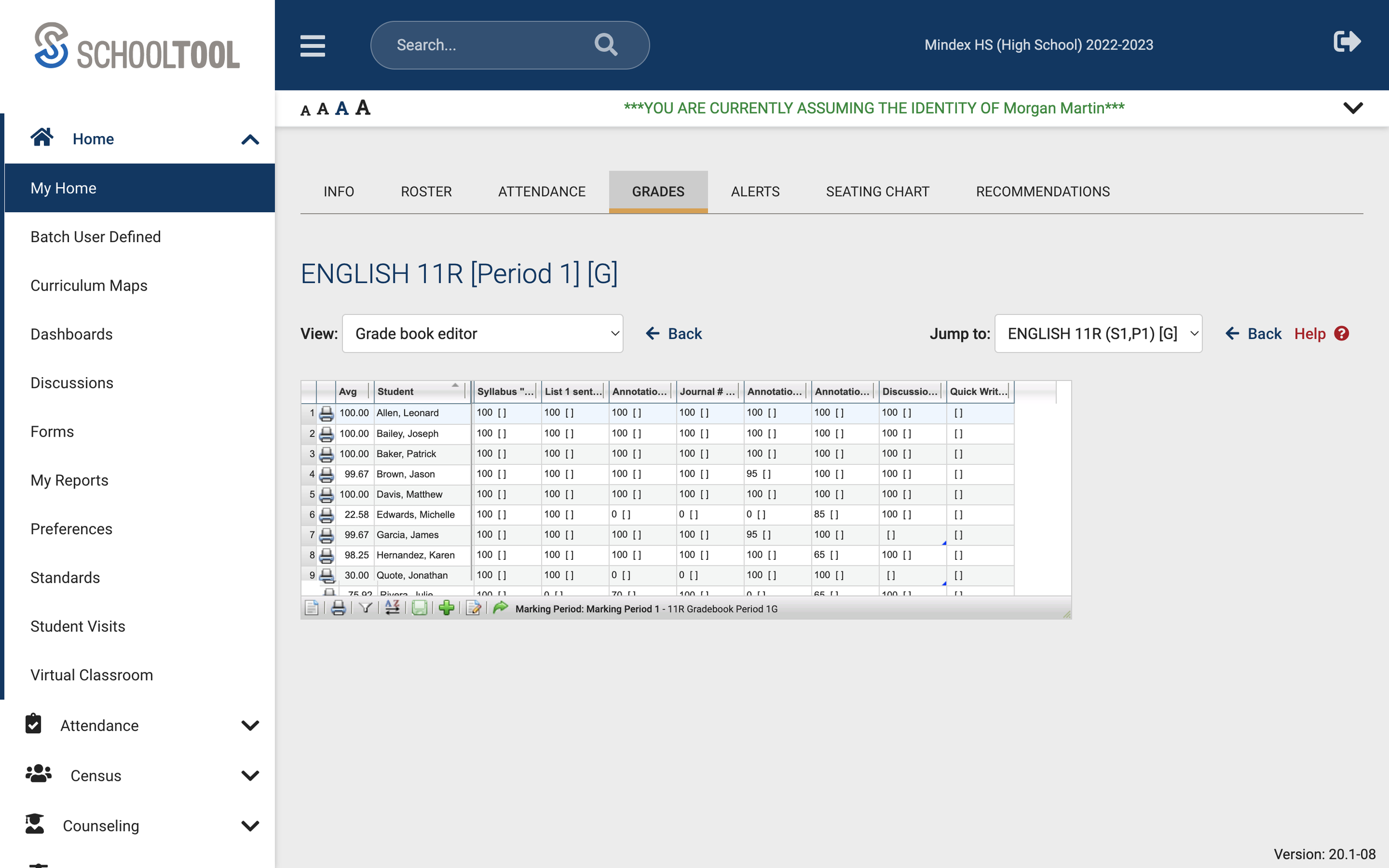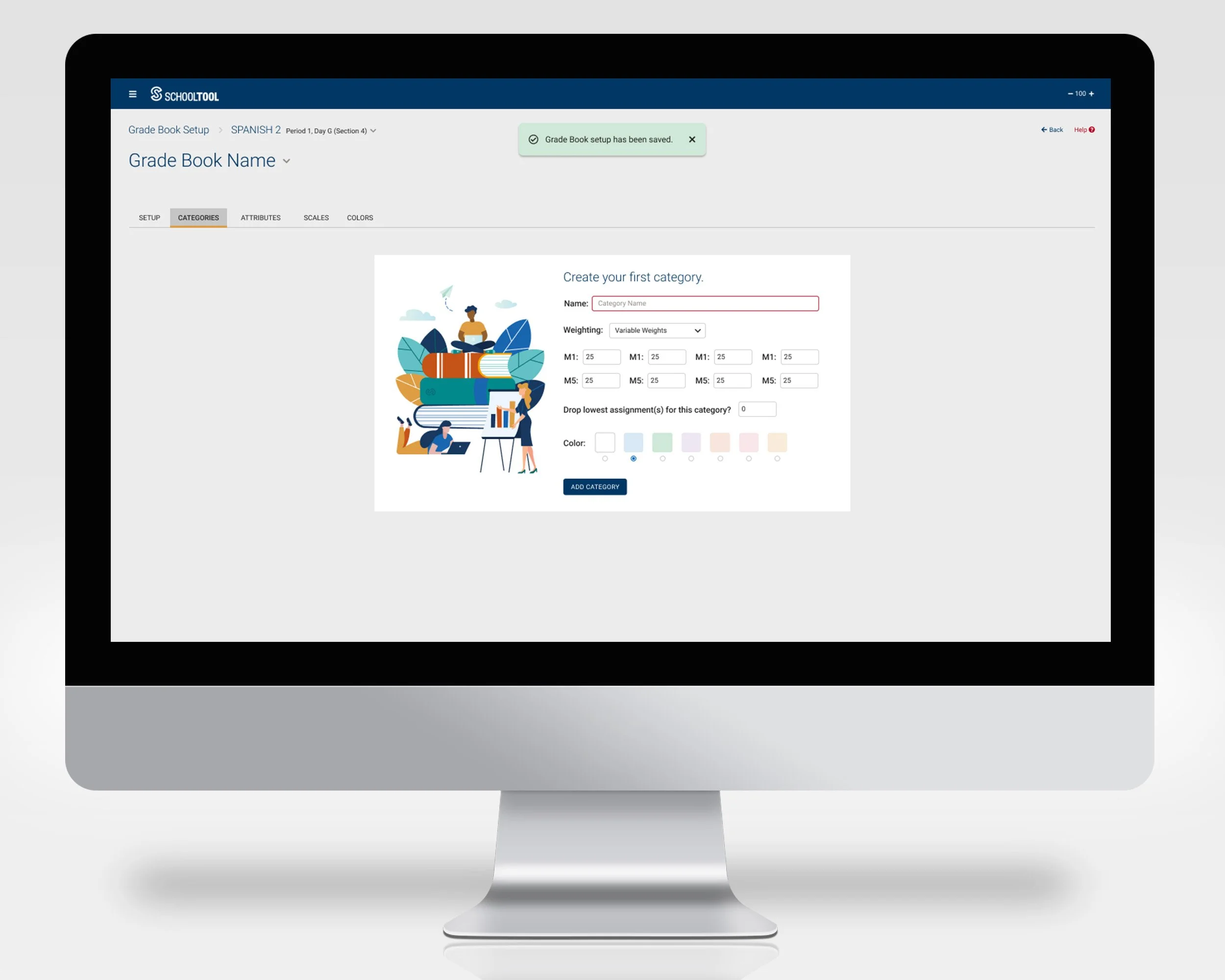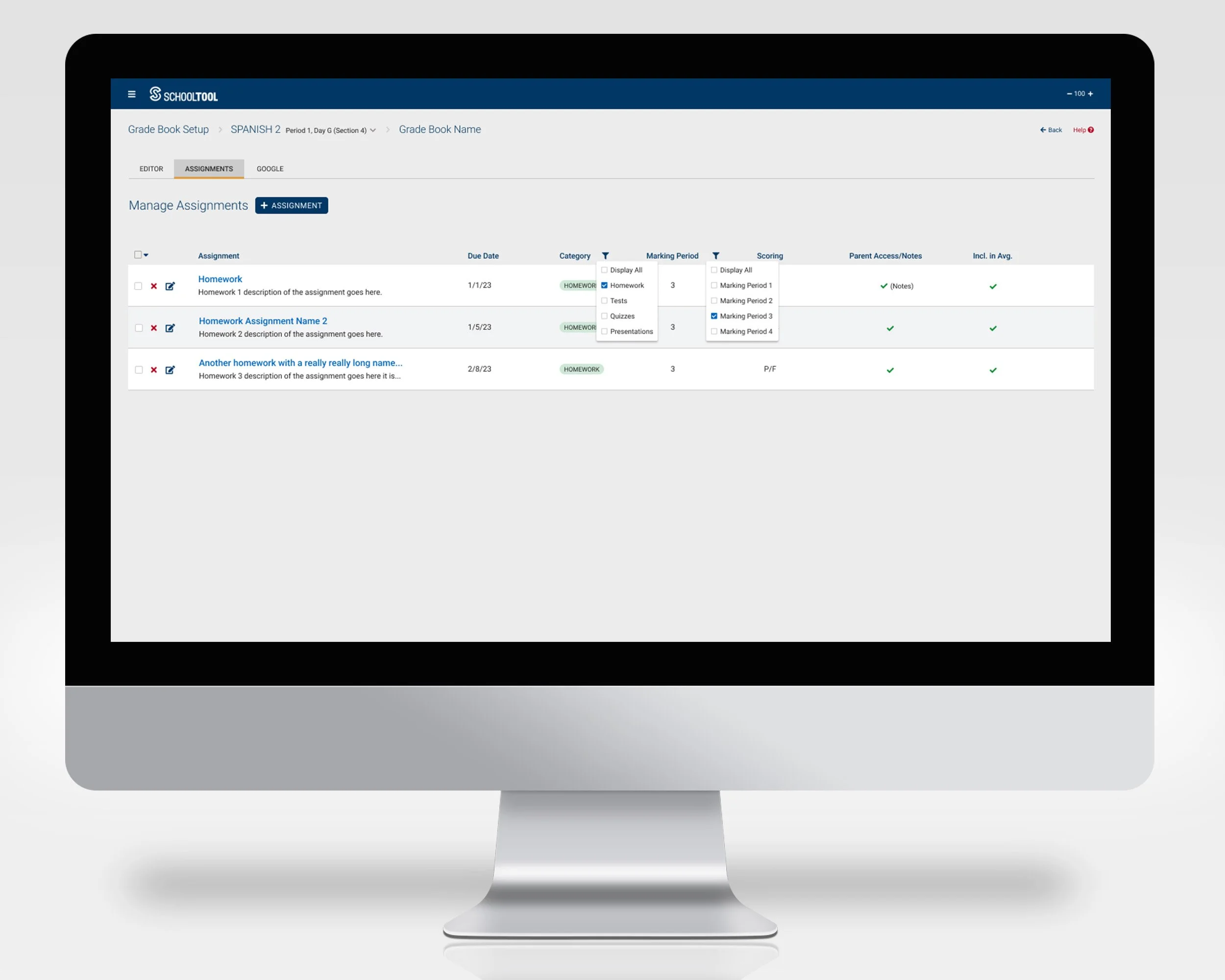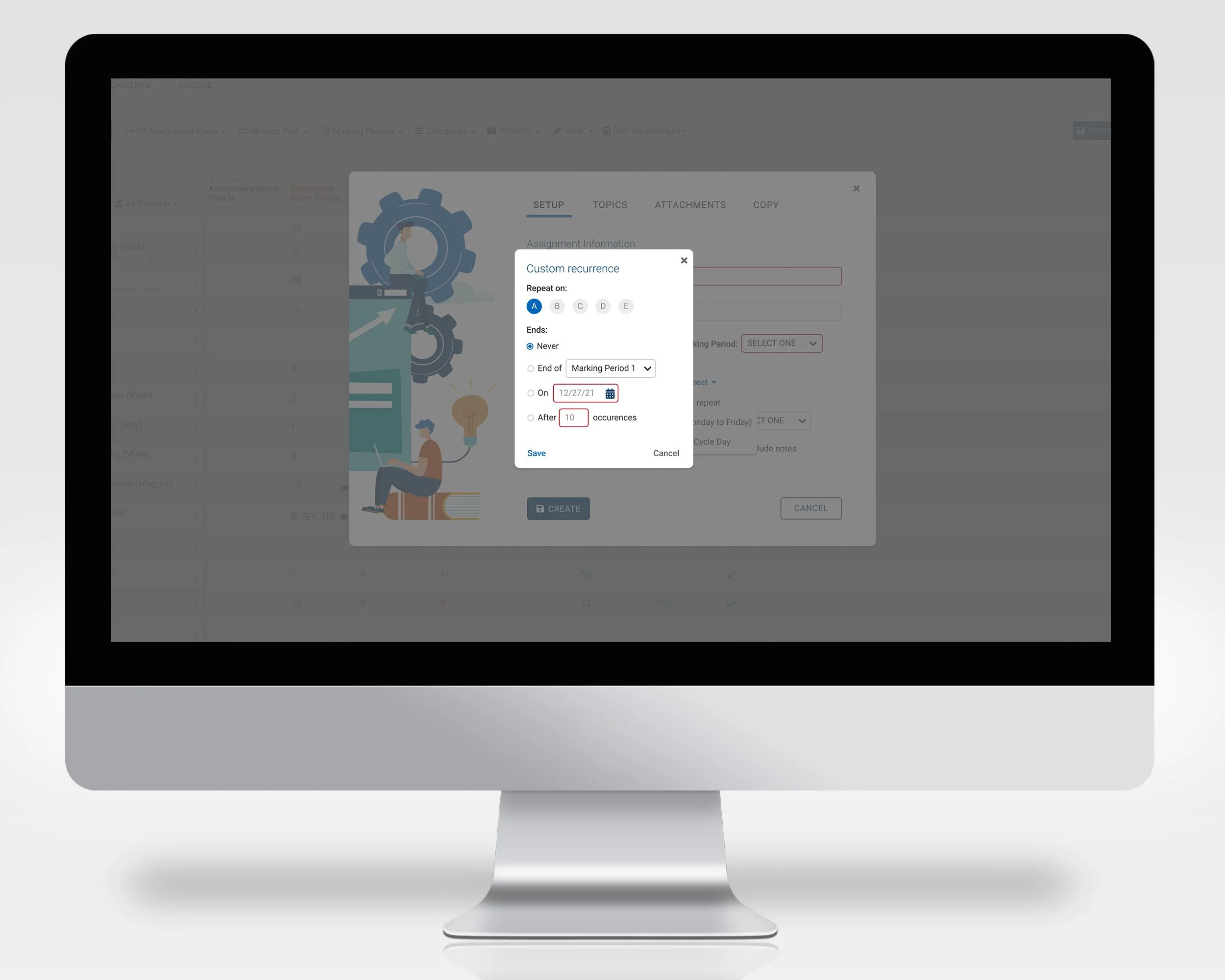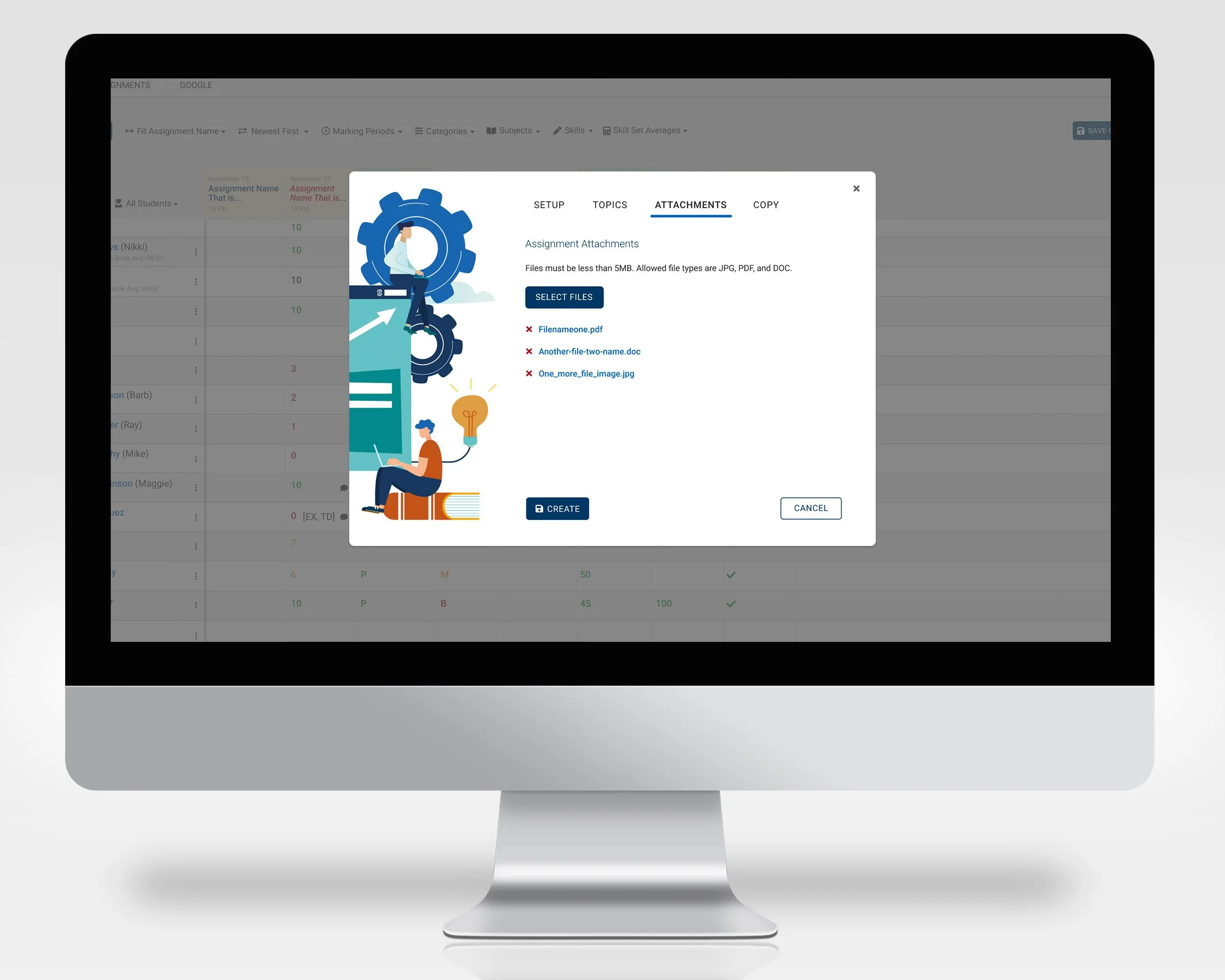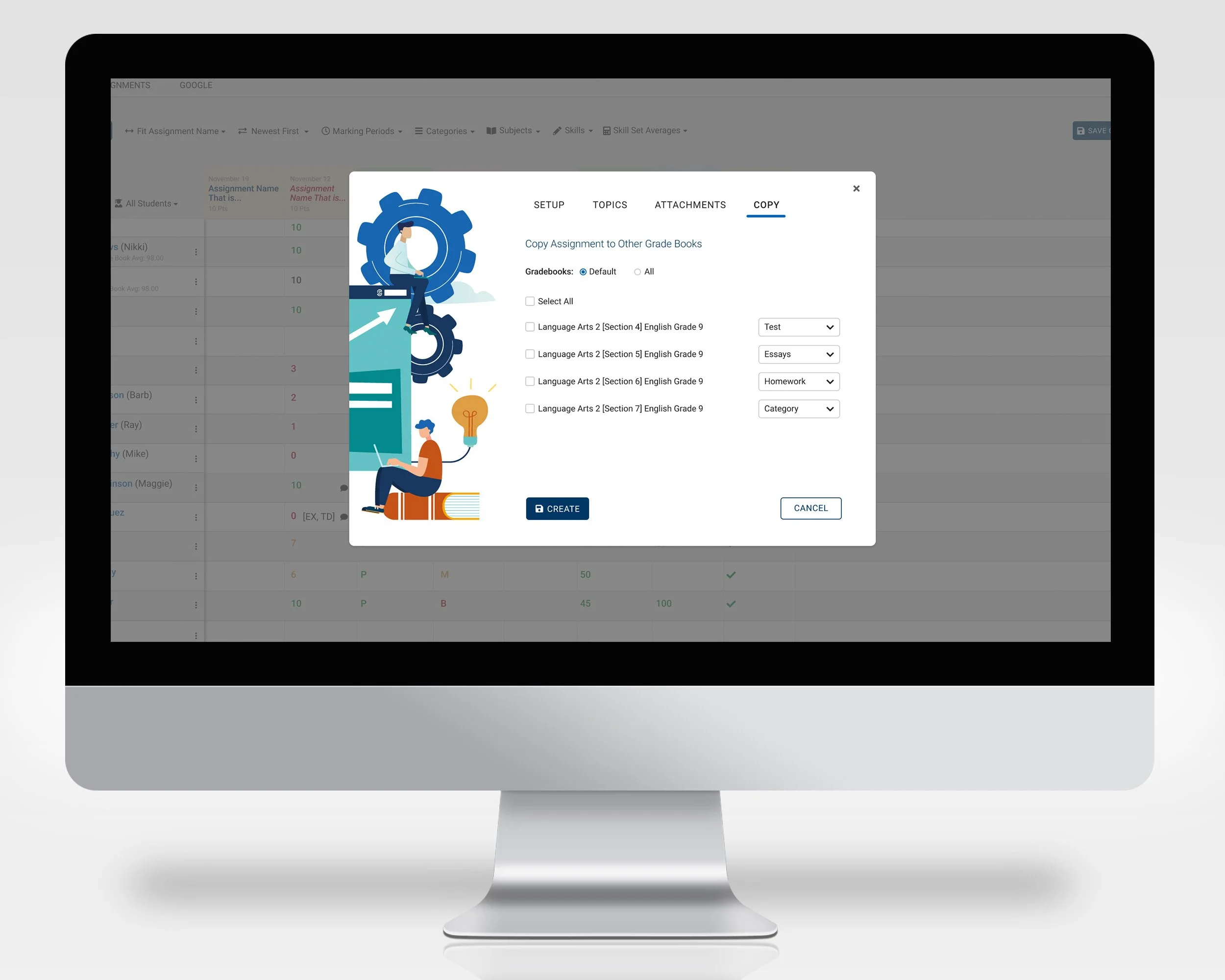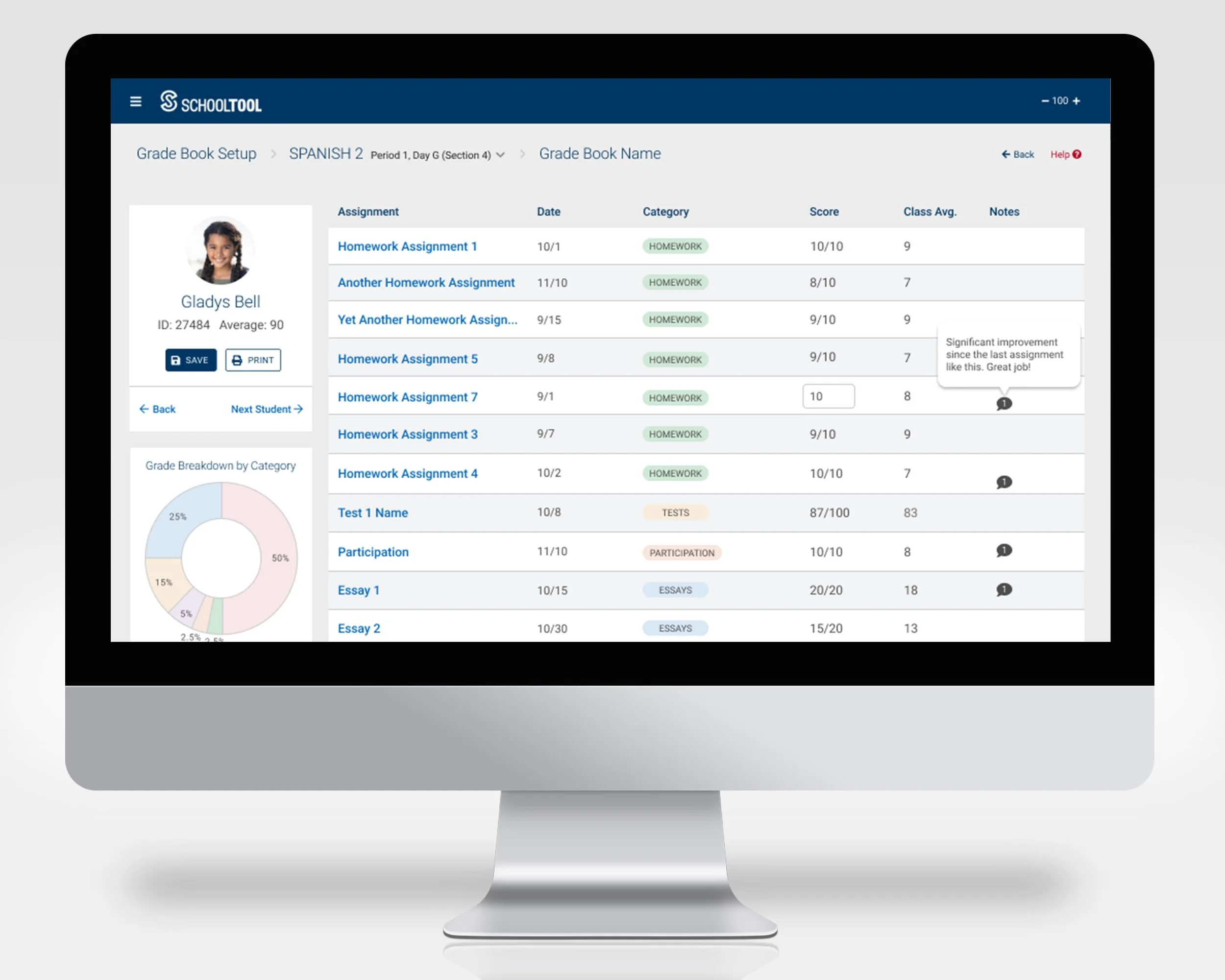SchoolTool Grade Book
Challenge: How might we improve the grading experience for teachers using SchoolTool?
Background: The grade book in SchoolTool is used by teachers, primary secondary teachers, to input grades for all students. The current grade book is a third party tool integrated into the SchoolTool platform. For years this has limited the options for customization and functionality. The decision was made to build a custom grade book to eliminate this third-party dependency. The existing grade book tool is shown to the left.
Process: We reviewed years of past feature requests relating to the grade book in SchoolTool. I conducted one-on-one user interviews with primary and secondary teachers from various districts around New York State. We conducted focused feedback sessions during eight user groups, both in-person and virtual, and asked users to share their likes, dislikes, and integration needs relating to grading. Lastly, we sent a survey asking users to rate the existing Grade Book features and experience. Using this data I was able to see clear themes and mapped the user journey shown below.
86
Support Tickets Reviewed
22
User Interviews
8
Focus/User Groups
92
Survey Responses
Existing SchoolTool Grade Book
User Journey Map for Teachers
Implementation: We held and internal brainstorm session and began defining feature requirements for the Grade Book. Using Figma, I designed several user flows from the grade book setup and creation, to assignment creation, and inputting grades from both an elementary and high school teacher perspective. These mockups were then used for secondary one-on-one user interviews, and at user groups for further feedback. Some of the largest areas of change included a new setup workflow, and adding color coding for categories and better data visualization of category breakdowns, shown below.
“The new grade book colors and the pages that walk you through setup are very nice.”
Within the grade book itself, we introduced the concept of reoccurring assignments to help streamline the process for teachers who need an assignment that is happening daily or every time their class meets, shown below.
One of the largest, and most complicated, additions to the grade book is the ability to support different grading scales. The grade book must allow grading scales using emojis like a check mark, plus/minus, smileys, as well as traditional alpha and numeric scales. With a Standards Based Grading method, grades are rated with a 1-4, or NA (Not Assessed), but should not average or total at the end of the grading period.
The new grade book will allow teachers to have a mix of traditional or standards-based assignments, and be able to sort or filter by either. Their view within the grade book can be flipped to be sorted by the standard the assignment related to, or by overall grade for the assignment.
Another helpful tool that will be introduced is an individual student view. By clicking on a student from the grade book, the teacher can see and input grades for a single student. This will give them a look at the student’s overall progress and can be exported to send to parents. This gives the teacher a view they can share with parents and students without revealing other students’ information. Similar to the grade book, this view will support traditional or standards based grading.
Individual Student View
“I really like the gradebook refactor. There are many new features that I think will benefit the teachers. I think it’s going to be a big change at first, but once they get used to it, I think it will be one of the biggest ‘hits.’ I like the pop-up boxes instead of going back and forth from screen to screen. Color coding, the templates... the list goes on.”

